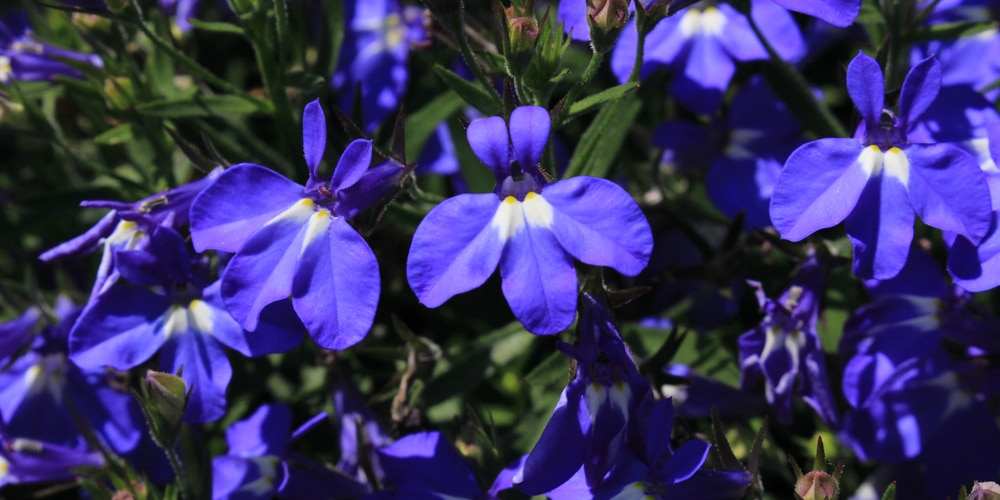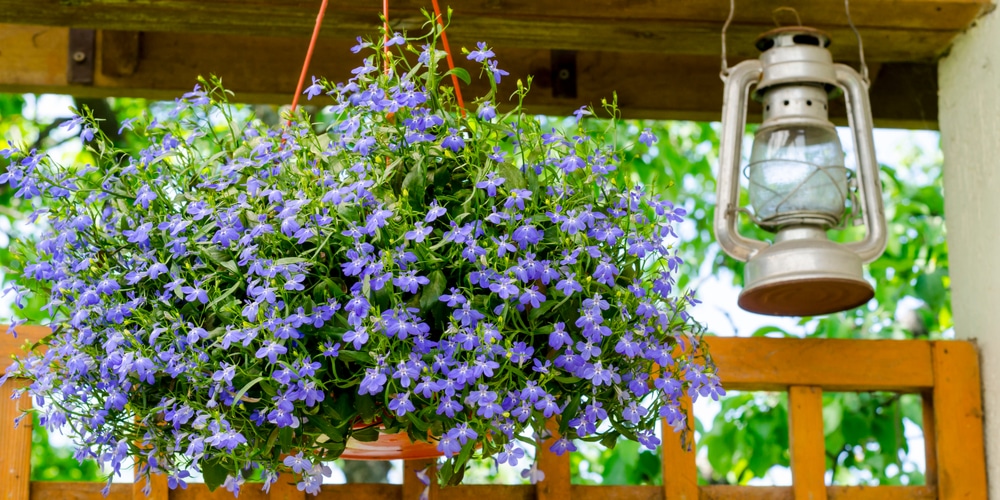Regatta Midnight Blue Lobelia (scientific name: Lobelia erinus), also known as Trailing Lobelia, is an herbaceous plant that can be your perfect addition to hanging baskets and containers.
With its royal blue flowers, it can add a splash of color to your garden and bring a delicate texture to your yard. Its blooms will attract plenty of beneficial pollinators, including bees and butterflies. If you have some empty corners of your garden, consider getting a Regatta Midnight Blue.
However, don’t forget that this plant won’t resist temperatures below 50F. Before deciding to add one (or more) of these plants to your yard, know if your local weather is suitable for their survival.
But to learn more about this variety of Lobelia, keep reading our essential guide. Here, you will learn to recognize this plant and get a couple of tips for ensuring it thrives in your garden.
Regatta Midnight Blue Lobelia Characteristics

Regatta Midnight Blue Lobelia grows in a trailing habit: it will eventually spill over the edges of the container you place it into for a stunning aesthetic effect. It makes for an excellent hedge plant but can also be a fun addition to rock gardens or hanging baskets.
Contrary to other species, Regatta Midnight Blue is a perennial that will return each year with warm temperatures. While the blue variety is the most common, you can find hybrids of regatta in shades of purple, rose, and white. To make your garden even more unique, look for variegated versions! Alternatively, stick with the traditional perennial: it is always a good choice.
There might be no better option than planting Regatta Midnight Blue Lobelia somewhere it can thrive to add more color around your house. This plant produces delicate royal blue flowers from mid-spring to fall and displays dense but small foliage that remains green all year round.
These characteristics make it an idea for ground covers. Not only do they create a perfect backdrop for your other plants, but they also attract pollinators that might keep pests and harmful insects away.
Overall, this type of Lobelia brings a fine texture to your garden composition. These plants do not produce grassy centers and will continue to bloom during the warm season.
This plant rarely grows more than eight inches tall and 15 inches in width, making it easy to keep it under control. Still, to make the most out of it, you must know what conditions it needs to thrive. Jump over to the next section to find out what these plants need.
Growing Conditions
Lobelia erinus, like most other types of Lobelia, does better under partial sun. Plant it somewhere shaded from the hot afternoon sun, especially if you live in a warm reason. Luckily, besides choosing the appropriate location, there isn’t much more you have to worry about when growing this variety of Lobelia. Indeed, this plant is relatively easy to care for: you won’t face any issue with it, provided that you give it what it needs to thrive.
This plant does well in most soil conditions and doesn’t require any particular soil pH to thrive. However, it prefers moist conditions. If you live somewhere dry and hot, consider adding mulch around these plants to improve water retention and ensure better nutrient absorption.
If you decide to grow this plant in a hanging basket, remember to water it more frequently. Plus, if you wish to plant more than one Lobelia Erinus in your garden, don’t forget to leave your plants enough space to grow. Allow for a distance of about 10 inches between each plant.
While fertilizing is not necessary, you can apply a continuous-release fertilizer to sustain your plants throughout the growing season. Also, you won’t have to prune your plant unless you notice flowering slowing down in the summer: the best way to revive your plants is to cut them by one half and give them regular watering. Such a radical pruning process will enhance new growth and ensure your plant will produce plenty of blooms when the warm season arrives.
Regatta Midnight Blue Lobelia: The Bottom Line
Regatta Midnight Blue Lobelia is a stunning perennial that will perform well in almost any garden, provided that you don’t expose it to low temperatures. Unleash your creativity and experiment with different uses for this plant: you won’t get disappointed!
